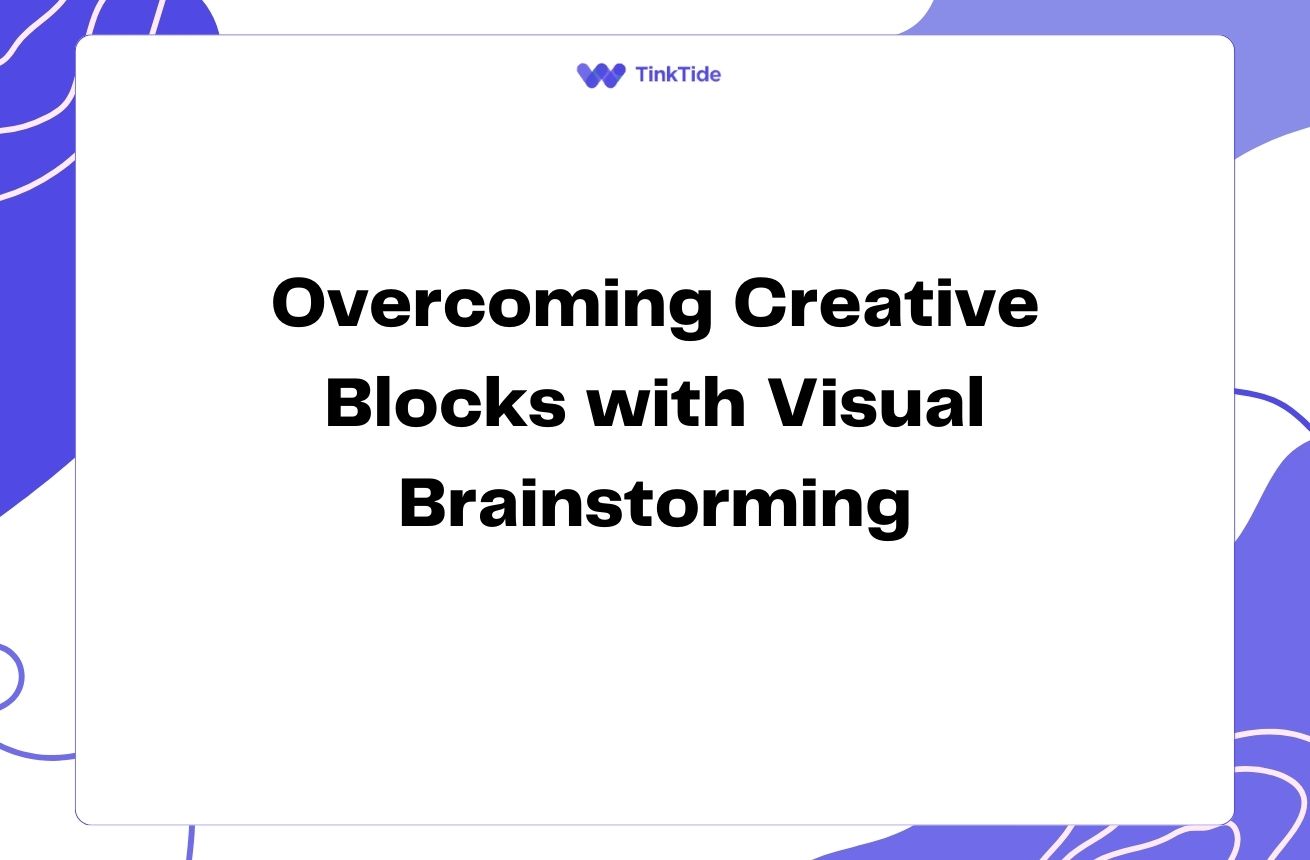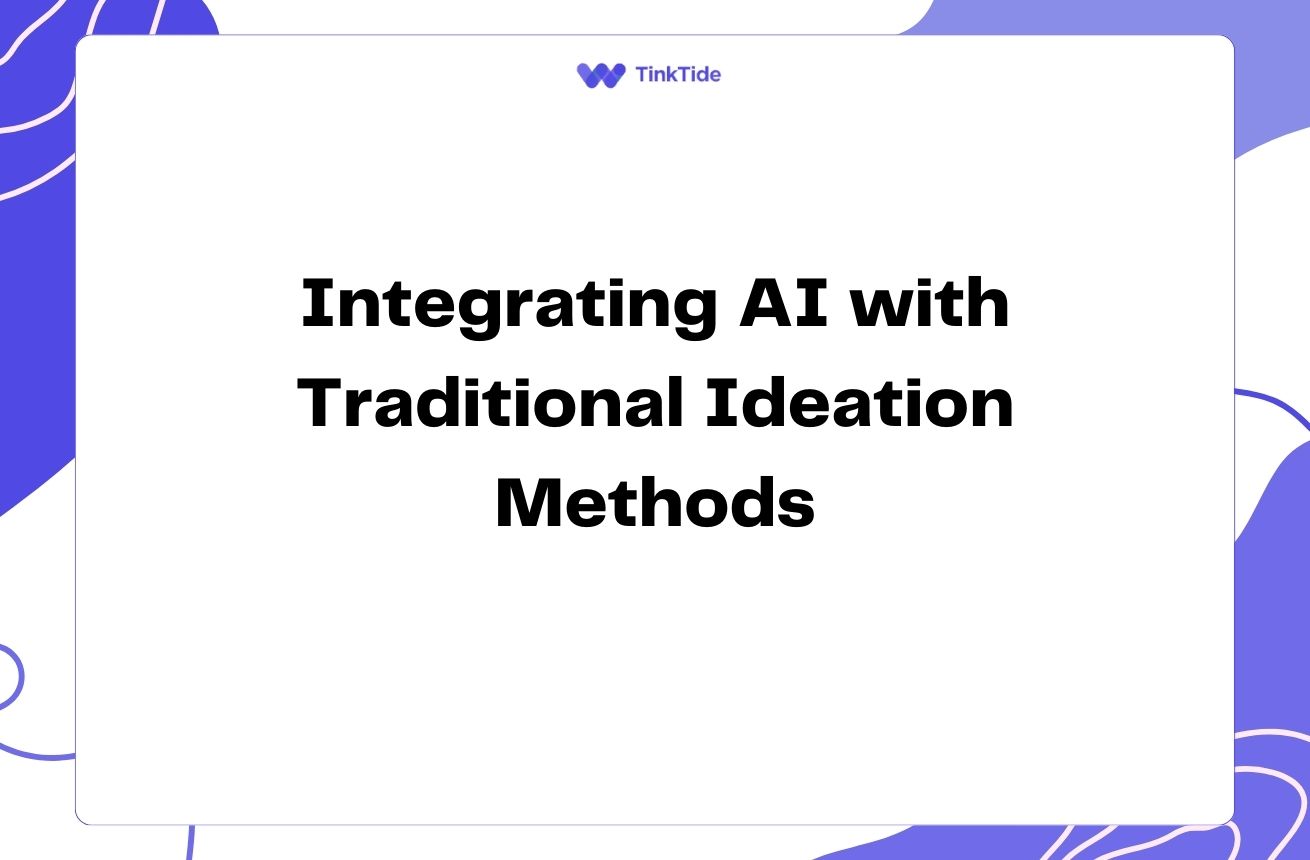Innovative Ideation Methods for AI-Powered Products
Understanding the Importance of Ideation in AI Product Development
In the rapidly evolving world of artificial intelligence, coming up with innovative ideas for AI-powered products and services is crucial for staying ahead of the competition. Effective ideation methods can help you uncover unique opportunities and create solutions that truly resonate with your target audience.
Ideation is the creative process of generating, developing, and communicating new ideas. When it comes to AI products, this process involves combining technological capabilities with real-world needs to create valuable and impactful solutions. By mastering various ideation techniques, you can unlock the full potential of AI and develop products that stand out in the market.
In this article, we'll explore several proven ideation methods that can help you generate innovative ideas for AI-powered products and services. These techniques will enable you to think outside the box, identify unique opportunities, and create solutions that address real user needs.
Design Thinking: A Human-Centered Approach to AI Ideation
Design thinking is a powerful approach to ideation that puts the user at the center of the product development process. This method is particularly effective for AI-powered products because it helps bridge the gap between complex technology and human needs.
- Empathize: Understand your users' needs, pain points, and desires through research and observation.
- Define: Clearly articulate the problem you're trying to solve based on user insights.
- Ideate: Generate a wide range of potential solutions without judgment.
- Prototype: Create quick, low-fidelity versions of your ideas to test and refine.
- Test: Gather feedback from users and iterate on your prototypes.
By following the design thinking process, you can ensure that your AI-powered product ideas are grounded in real user needs and have a higher chance of success in the market. For more information on applying design thinking to AI projects, check out IDEO's guide on Design Thinking for AI.
Brainstorming Techniques for AI Product Ideas
Brainstorming is a classic ideation method that can be highly effective when generating ideas for AI-powered products. Here are some specific brainstorming techniques tailored for AI ideation:
1. AI Capability Mapping: Start by listing out various AI capabilities (e.g., natural language processing, computer vision, predictive analytics) and brainstorm potential applications for each capability across different industries or user scenarios.
2. Problem-Solution Pairing: Identify common problems in various industries and brainstorm how AI could be used to solve these issues. This technique helps you focus on creating AI solutions with real-world value.
3. Future Scenario Planning: Imagine potential future scenarios and brainstorm AI-powered products that could exist in those futures. This technique can help you think beyond current limitations and identify long-term opportunities.
Market Research and Trend Analysis for AI Product Ideation
Staying informed about market trends and emerging technologies is crucial for generating innovative AI product ideas. Here are some effective research methods:
1. Competitive Analysis: Study existing AI products and services in your target market. Identify gaps or areas for improvement that your product could address.
2. Technology Trend Monitoring: Keep track of advancements in AI and related technologies. Resources like MIT Technology Review's AI section can help you stay updated on the latest developments.
3. Industry-Specific Research: Dive deep into specific industries to understand their unique challenges and opportunities for AI integration. This can help you identify niche markets or underserved areas ripe for innovation.
Collaborative Ideation: Leveraging Diverse Perspectives
Collaboration is key to generating truly innovative AI product ideas. By bringing together diverse perspectives, you can create more comprehensive and creative solutions.
1. Cross-Functional Workshops: Organize ideation sessions that include team members from different departments (e.g., engineering, design, marketing, sales) to generate well-rounded product ideas.
2. Expert Interviews: Consult with industry experts, AI researchers, and potential users to gain valuable insights and spark new ideas.
3. Open Innovation Platforms: Consider using platforms like InnoCentive to tap into a global network of problem solvers and innovators for fresh perspectives on AI applications.
User-Centered Ideation Techniques
To create AI-powered products that truly resonate with users, it's essential to involve them in the ideation process. Here are some user-centered ideation techniques:
- User Interviews: Conduct in-depth interviews with potential users to understand their needs, pain points, and desires.
- Contextual Inquiry: Observe users in their natural environment to identify opportunities for AI-powered solutions.
- Co-Creation Workshops: Invite users to participate in ideation sessions, allowing them to contribute their own ideas and insights.
- Journey Mapping: Create visual representations of user experiences to identify pain points and opportunities for AI integration.
- Persona Development: Develop detailed user personas to guide your ideation process and ensure your ideas address specific user needs.
Iterative Ideation: Refining and Evolving AI Product Concepts
Ideation is not a one-time event but an ongoing process. To create truly innovative AI-powered products, it's important to iterate and refine your ideas continuously.
1. Rapid Prototyping: Create quick prototypes of your AI product ideas to test their feasibility and gather early feedback. Tools like Figma can help you create interactive prototypes quickly.
2. A/B Testing: Develop multiple versions of your AI product concept and test them with users to identify the most promising direction.
3. Feedback Loops: Establish regular feedback sessions with users, team members, and stakeholders to continuously improve and evolve your AI product ideas.
Address common questions
Here are some frequently asked questions about ideation methods for AI-powered products:
How can I ensure my AI product idea is truly innovative?
To ensure innovation, focus on solving real problems in unique ways. Combine market research, user insights, and the latest AI capabilities. Regularly validate your ideas with potential users and industry experts to refine and improve them.
What role does data play in AI product ideation?
Data is crucial in AI product ideation. Consider available data sources, data quality, and potential data collection methods when generating ideas. Look for opportunities to leverage unique or underutilized datasets to create competitive advantages.
How can I balance technical feasibility with user needs in AI product ideation?
Start with user needs, then explore how AI can address those needs. Involve both technical experts and user researchers in your ideation process. Use rapid prototyping to test the technical feasibility of your ideas early in the process.
What are some common pitfalls to avoid in AI product ideation?
Avoid focusing solely on technology without considering user needs, ignoring ethical implications of AI, and overlooking potential biases in AI systems. Also, be cautious of ideas that may infringe on privacy or data protection regulations.
How often should I conduct ideation sessions for AI products?
Ideation should be an ongoing process. Schedule regular ideation sessions (e.g., monthly or quarterly) to stay innovative. Additionally, be open to impromptu ideation when new technologies emerge or market conditions change.
Provide additional resources
IDEO U: Designing for AI Course
Learn how to apply design thinking to AI product development
Stanford d.school: Design Thinking Bootleg
A toolkit for applying design thinking methods to your ideation process
AI for Product Managers
Coursera course on AI product management, including ideation techniques
The AI Canvas
A framework for developing AI-first products and services
Ethics in AI: A Framework for Ethical AI
Guidelines for considering ethical implications during AI product ideation
Summarize key takeaways
Effective ideation is crucial for creating innovative AI-powered products and services. By combining methods like design thinking, brainstorming, market research, and user-centered design, you can generate ideas that are both technologically advanced and deeply resonant with user needs.
Remember that ideation is an ongoing process. Continuously refine and evolve your ideas through prototyping, testing, and gathering feedback. Stay informed about the latest AI advancements and market trends to identify new opportunities for innovation.
By mastering these ideation techniques, you'll be well-equipped to create AI-powered products and services that stand out in the market and deliver real value to users. Start applying these methods today to unlock the full potential of AI in your product development process.
Transform Your AI Product Ideas into Reality
Ready to bring your innovative AI product concepts to life? Start your journey with Tinktide today.
Start Your Free Trial

